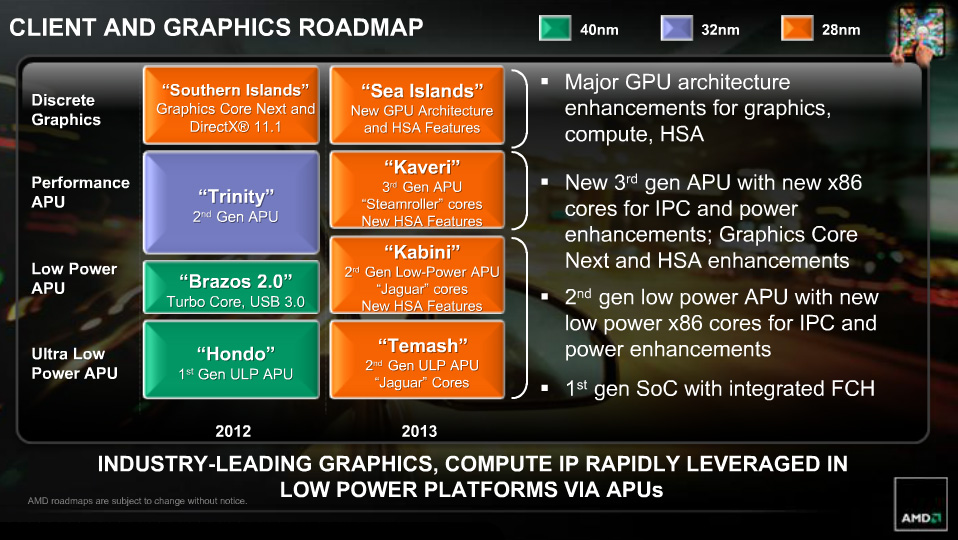According to
TSMC, 28nm HP has 45% more speed, ~2x transistor density at the same leakage as 40nm G process that Brazos is using.
Take as an example the Radeon HD7970 produced at 28nm HP at TSMC against the HD6970 at 40nm G process.
HD7970 has ~63% more transistors, higher frequency with smaller die and close the same power consumption as HD6970 at 40nm G.
That means that Brazos at 28nm could have almost double the CPU cores, double the Radeon cores, almost same frequency 1.6-1.7GHz and same power consumption (18W) as Brazos at 40nm.
Now, add a 15% higher IPC (or higher for single core) and an improved more efficient with more Radeon Cores iGPU and you have a winner at 18W.
Of-course a dual core could be clocked higher(maybe up to 40-50%) and keep the same 18W TDP.
I will say that a ~2.5GHz Dual core Jaguar would be faster than a 2GHz Dual core Single Module Trinity at 18W (A6-
4455M 2.1GHz base with 256 Radeon Cores at 17W)
at half the die size .




